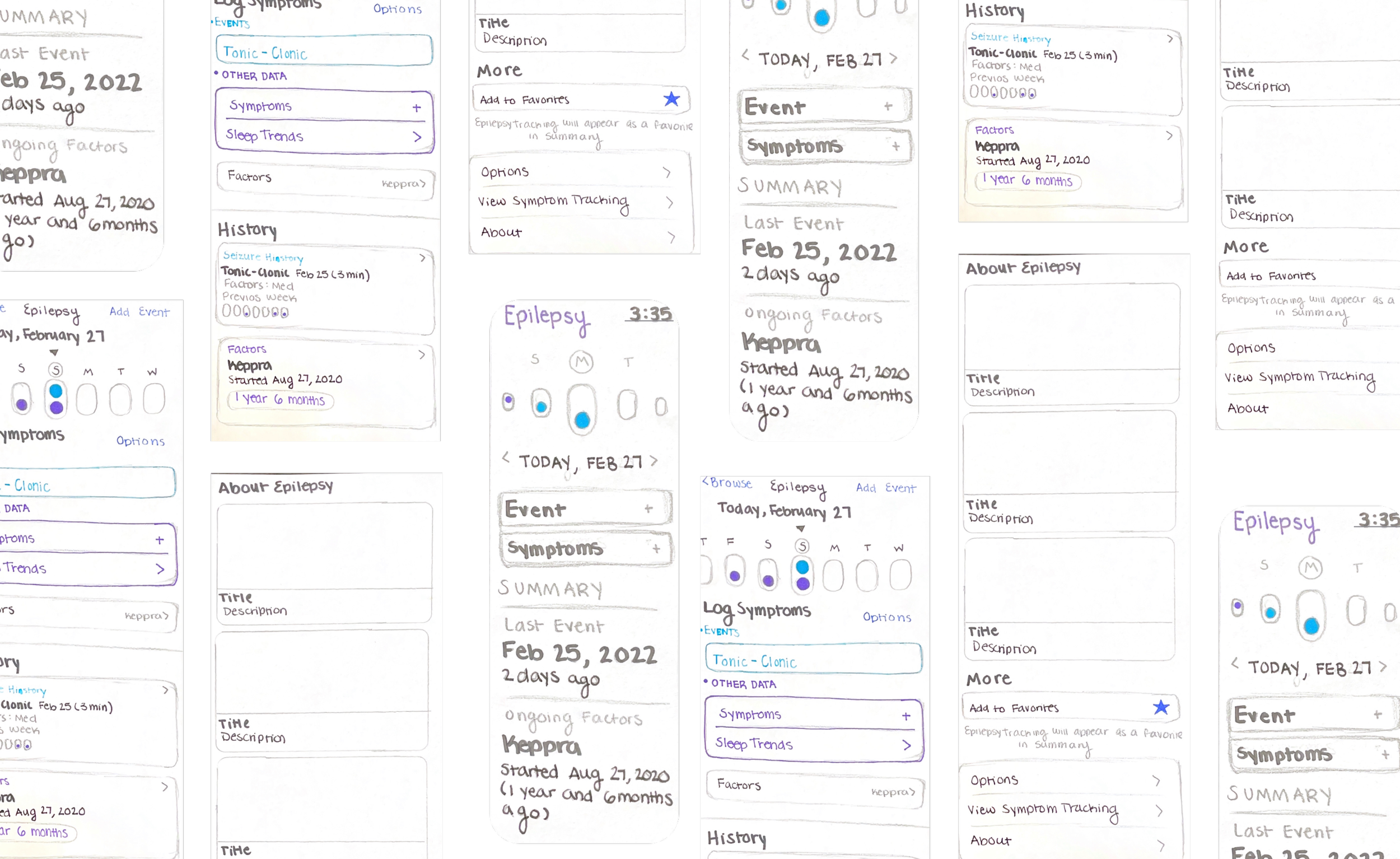Apple Health Seizure Detection and Response
An extension of the apple health app designed to detect and respond to seizures by contacting emergency services, contacts, and providing a set of tools and instructions to help bystanders within a certain radius of an event occurring.
Duration: 3.5 Months (Jan - May 2022)
My Role: User Experience Designer and Researcher

PROBLEM STATEMENT
How can we utilize wearable technology to connect those in an emergency with the help they need?
DESIGN PROCESS
DISCOVER
Comparitive Analysis
Made to find what is working well in the industry and areas of improvement, read the report here
Apps looked at:
Embrace Alert
Embrace Mate
SeizAlarm
Inspyre
Current State, Apple Health
Made note of current features and functionality within Apple’s Health App in order to insure a cohesive experience within the final solution.
Key Areas of Interest
Fall Detection - Apple’s system currently has the capability to alert registered contacts and call emergency services once a fall has been detected
Emergency Weather Alerts - Sends an alert to people based off of geographic location
Cycle Tracking - Keep track of significant events and symptoms organized by date in a calendar
In Depth Interviews
Interviewed 5 different college students one on one, following a semi-structured outline.
Key Findings
People want to help, they just do not know how
Many people think they would freeze in an emergency situation and wait for someone who is more qualified to help
Instinctually, people would call 911 first, prior to responding or helping someone in need
DEFINE
Empathy Mapping
Created based off of answers from the in depth interviews.
2 empathy maps made:
one for people who are unfamiliar with epilepsy,
another for people who are in the medical field or have experience dealing with seizures (displayed on the left)
User Personas
Information Architecture
Made to organize structure of Apple’s health app in order to fit the new experience in.
DEVELOP
Storyboarding
Created to show user flows that could not fit into the information architecture (ex. an emergency alert)
Sketches
Based off of Apple’s cycle tracking, first exploration into redesigning the experience to fit the needs of some who has epilepsy or seizures.

Wire-framing
More in depth designing than the sketching to show more micro interactions and have something more to show users for testing.
DELIVER
A/B Testing
Survey given with 5 participants shown option A and 5 participants shown option B, followed by some questions on usability and likelyhood of the participant stepping in to help if shown this notification.
Notifies a bystander of an event occurring near them, then gives them the option to help
Notifies a bystander of an event occurring near them and provides instructions on how to help at the same time
Key Findings
More people likely to help when given option A
Most people would call 911 when given the option prior to reading the instructions and helping someone
Usability Testing
Walked through and interacted the wireframes with 5 different college students, following another semi-structured guide.
Key Findings
Adding symptoms split into generic symptoms and aura, most people found no need for the separation and were confused as to what aura is
Medication under widget called “Factors” caused confusion
Some language used throughout cycle tracking was found to be confusing and needed reworking
FINAL SOLUTION
Seizure Detection
Detected through Irregular Movements
Emergency Notification
30 seconds no response > Bystander Notification Sent out and Emergency Services Contacted
Bystander Notification
Notifies Bystanders within a certain radius of a detected seizure
Provides bystander with instructions on how to help
Symptom Tracking
Keep track of events and symptoms
Detected seizures automatically tracked and can be edited
Learn More About Epilepsy
www.thecameronboycefoundation.org/ending-epilepsy-curing-sudep














